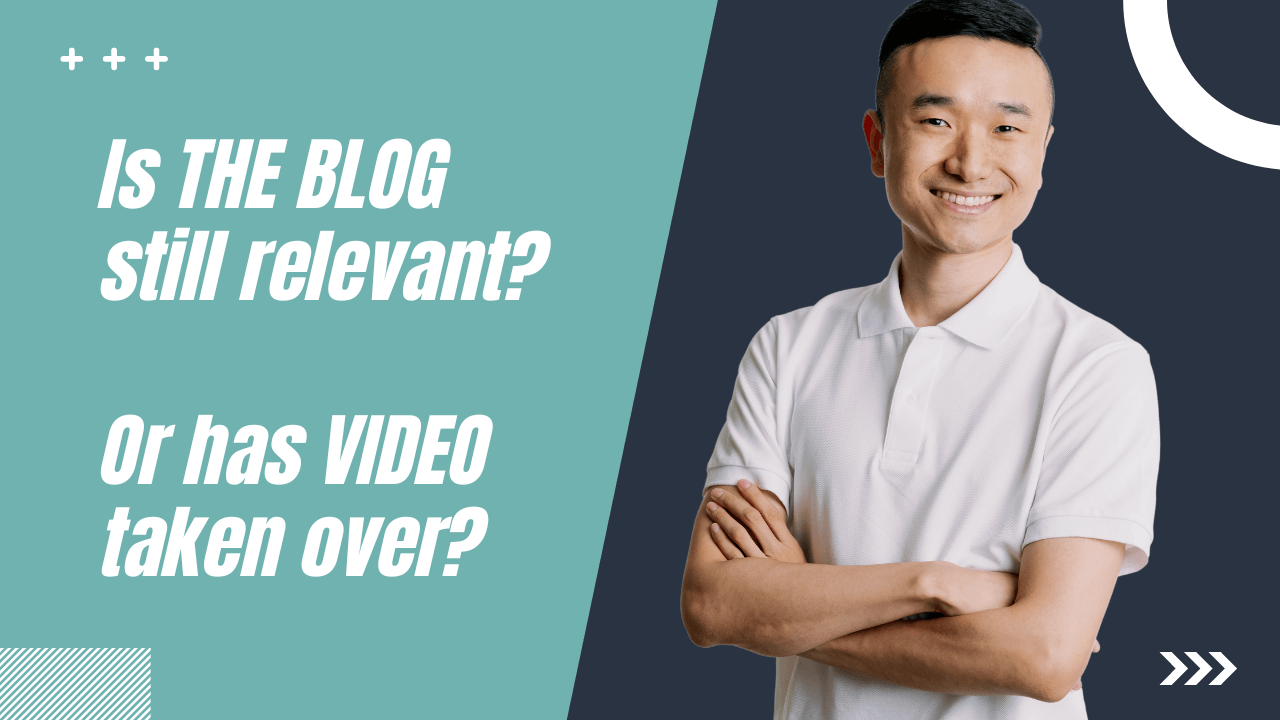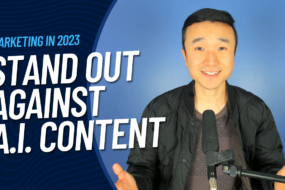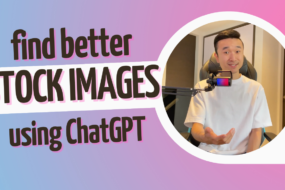
I get this question all the time. Is the blog finally dead? I feel like we’ve been talking about it for so many years. Is the blog still relevant? And if not, what’s taking over? And if it’s gonna be video, if video is the new king or queen of contents, how did we get here? And today, I’m gonna answer that in depth, but to do that, We’re gonna have to first take a few steps back at the end of the day, whether it’s blog or video.
Really we’re talking about content marketing. It’s thought leadership. And if we look back to Johnson and Johnson, 1888 was probably one of the first best examples of content marketing. Um, this was when j and j published the Modern Methods of Antiseptic Wound Treatments. Uh, and this was when content marketing was done in prints.
It was in little pamphlets that they handed out. Around town, uh, within months j j distributed 85,000 copies of, of these free of charge directly to doctors, surgeons, and pharmacists. And by 1891 it was translated into Spanish French with 4.5 million copies circulated worldwide. And really, I think that goes to show that content marketing is nothing new.
It’s been around for a very long time, but over the years and over the decades, the way in which we deliver content and circulate content has certainly changed a lot. And what is a thought leader? Well, a thought leader is recognized by peers, customers, and industry experts. As someone who deeply understands the business they’re in, the needs of their customers, and the broader marketplace in which they operate, they have distinctively original ideas.
Unique points of view and new insights. So content marketing and thought leadership often goes hand in hand. You’re introducing something new. The ideation part of it. That new innovation, innovative way of thinking or frame of mind, that’s the thought leadership. And content marketing often refers to the delivery of those ideas.
How are you delivering those novel ideas? Is it in a printed pamphlet? Is it in a digital video? So understanding those key terms are really important for this conversation. I wanna roll back. You know, we talked about how the origins of content marketing started in this world of prints, uh, but that was a long time ago.
I wanna walk you through a brief history of Google and search, cuz I think that will help us understand how blog became do. Once upon a time in 1998, Larry and Sergei launched Google, and really that transformed the way we discover and consume information online. And by the year 2000, it became the largest search engine indexing over a billion websites all around the world.
By oh four, Google went public with 230 million daily searches and by oh eight s Google launched the Chrome browser. And really, this was the decade of Google and Google’s dominance came to define how we think about content and how thought leadership was discovered. So much of this was driven by the work of Google.
And as a result of that dominance, the website became the hub of marketing. The blog became the hub of thought leadership. The blog became an extension of the website. If you think about how, um, we communicated with our customers in the year two thousands, it was a lot of putting information on our websites hoping that they would be discovered through search engine.
Everything tied back to your websites. You’re trying to send people to your domain. You’re trying to rank for certain keywords. The hub of commerce, the hub of your brand was all on your website and the blog was the most dynamic part of your website where you were publishing ideas, you were frequently sharing your expertise reports and insights.
Um, and that really very much defined content marketing and thought leadership back in that. Uh, now some things started to change. A new era emerged in oh four Zuckerberg launched, uh, the facebook.com. That’s what it was called back in the day. By oh six Dorsey Jack Dorsey showcased Twitter as South by Southwest by oh seven Jobs unveiled the iPhone at Macworld, and by 2010, Instagram was launched on the app store.
And you can see a stark difference from the, the key milestones that occurred in a decade prior where it was very search. Google driven, website driven. This is the rise of social with Facebook, with Twitter, the rise of mobile with iPhone and Instagram, and these significant events shaped content marketing and thought leadership as we know it today.
Daily time spent by device. Has been rapidly shifting towards mobile, and that’s to nobody’s surprise, but we’ll talk a bit about what the implications are. You look at the graph here, you can see that primarily people were on desktop computers up until 20 13, 20 14 was when this massive divergence happened.
Mobile massively took over what desktop used to be. We just fundamentally consume information in a very different way than we did before. And in one graph, you can see how significant this behavioral change has. The evolution of mobile phone also plays a big part in how our relationship with blog versus video has come into be.
So take for example, back in 1990, we’ve got these, these cellular phones that were really for the purposes of communication only. And over time, as we drifted closer to 2015, you start to see these screens get bigger and larger. And now we’re looking at potentially foldable phones as. Even more screen space, which all goes to show that the, we now have the hardware capabilities to be able to consume multimedia content that are much higher definition.
Uh, it used to be that in prints, for example, we could only print black letters, and so that was the constraint of the technology at the time. Nowadays, when we have these HDTVs in the palm of our hands and in our pockets, we want more out of our content more than just. Information richness is defined as the ability of information to change understanding within a timeframe.
Uh, and this media richness theory was introduced in 1986 and, uh, this really goes to illustrate the evolution of content over time as well. So if we look at content from the lens of media richness, you’ll see that on the lower end of the spectrum you’ve got images. Images are non interactive. They’re like paintings, Instagram, Pinterest, you know, photo based.
Uh, and then you’ve got texts, which allows you to elaborate a bit more. These are emails, these are documents, and it allows you to go into more details on a given subject. Then you’ve got audio, which is more of like a podcast would be a good example, just an audio only format where not only do you get information, but you also get the tone of voice, the attitudes, the energy of the speaker.
And then you’ve got video videos, kind of a combination of all these things. It’s content, it’s voice, it’s tone, but it’s also face to face, it’s hand gestures, it’s eye contact, Uh, and then of. As the classic wisdom goes, nothing replaces face to face. Face to face is the highest form of media rich contents, and that’s why even today, sales is most effective when you can actually sit down with someone and talk to them to have that handshake, to make that eye contact in person.
So if we think about media richness, we can see that over time as the constraints of our technology lifted, we were able to produce content that was more and. Media rich, and that’s how video has slowly taken over texts in the role of thought leadership and content. Mark. There’s also this, uh, in inevitable shift from words to video as a culmination of all the trends that we’ve talked about prior.
And this graph here really shows exactly how that’s happened. That decade of Google year, 2000 to 2010, very search dominant, very search engine, um, blog post, website dominant. But as these things started to. Media became more rich in this graph here. Highlights how media richness has increased over time with some of those key milestones happening along the way, like the launch of Instagram, Snapchats, uh, TikTok, YouTube, all playing a major role in changing how we think about content and our relationship with brand, with, um, purchasing decisions.
And so, uh, this trend continues. Above and beyond into 20 20, 20 22, 20 23. I think by 2030, media is only gonna get more rich as our technologies lift these constraints so that we can tell stories in more engaging and immersive ways. A lot of things, uh, a lot of times people don’t really notice, but YouTube has become the second largest search engine.
On the internet with more than 3 billion searches per month. YouTube is bigger than Bing, Yahoo, Ask and AOL combined. When we think about YouTube, we think it’s a video platform. We often don’t associate it as a search engine, but really people are going on YouTube to search for things like, How should I think about B2B marketing?
How do I create a, a. Video content for my Instagram channel. And so YouTube is very much a search engine where people are going to for answers. And YouTube itself is such a great demonstration of how Google is thinking about this evolution as well. They knew that search dominated that that previous decade, 2000 to 2010, and they were well positioned to capture this next wave of media rich search through its investment into YouTube.
Um, and YouTube is now one of the biggest player in that. Uh, I always think about this quote from 2018, Mark Zuckerberg shared at an earnings call. I see video as a mega trend. That’s why I’m gonna keep putting video first across our family of apps. And you can see that he’s gone ahead and done that over the past couple years.
You’ve go on Facebook, you’ve go on Instagram, Everything is becoming video first, and I think that’s just such a, such a strong piece of evidence that the, the position of the blog is not where it used to be. And, and this, this tells us a lot about how video got to where it is. It is a combination of software and hardware.
Um, where we’re finding ourselves now is really this trillion dollar fight for attention. Ecosystems are closing up. Newsfeeds are prioritizing posts that are natively social. So Facebook doesn’t want you to leave Facebook. LinkedIn doesn’t want you to leave LinkedIn. It’s not like you can just post a link, um, to YouTube on Facebook.
You know, there’s algorithm preferences and if you post a video natively on that social platform, a lot of market. Find that you generally do better when it’s native organic contents. Video posts are getting three times more engagements than image texts and link posts for a variety of different reasons.
But the consistent and consensus is that when you post a video, you tend to get a lot more engagement than if you were to just share a link to a blog post. Uh, businesses are relocating their brand hub from websites to social profiles. Earlier we talked about how the hub of commerce, or the hub of your brand used to be your website and the blog used to be.
Dynamic extension of that website. Nowadays the brand is shifting over its home, away from the websites onto social profiles, and this is also partially to play to the benefit of these social medias as well. A lot of these social media network don’t want you to leave. Their social network, and that’s why they give such a preference to brands who build their brand on their social network.
The web is also becoming more fragmented, so it used to be this one open web and it was interconnected through a search engine, and you’re hopping from domain to domain, but with the invention and. The proliferation of mobile phones and then henceforth social media networks and social media apps, they’ve all become these closed networks.
Um, so if you’re on Facebook, you’re usually navigating within Facebook, you’re on LinkedIn, you’re navigating within LinkedIn, and not a lot of cross hopping happens anymore. And these social media platforms are somewhat designed to keep you on their platform. Uh, and so as a result, the web becomes more fragment.
There are people who spend a lot of their time on Facebook and YouTube and LinkedIn, um, and you see this complicated network of Venn diagram. Um, so the web is nothing like what it used to be, and it’s important that we think about that when we’re producing content, is that we’re creating content for a series of these different closed communities as opposed to a one size fits all approach, which used to be good enough when it came to just posting something on your blog.
Each platform is also becoming more complex. So we’ve talked about there being an increasing number of different platforms out there, but each of those platforms, and I think Instagram’s a great example. Instagram started off with a simple photo sharing app, but nowadays you’ve got Instagram Live, you’ve got stories, collections, highlights.
Uh, even YouTube now has YouTube shorts in addition to their regular YouTube videos. LinkedIn has LinkedIn live, and so story goes on and on and on and all get all that is to say that when we’re thinking about producing content and shaping our content strategy for tomorrow, we have to think about these things.
How do we build out an Instagram story strategy in addition to the Instagram feed strategy and taking all of these moving pieces into consideration to cut through the noise? That’s what we have to do to right. The content for the platform that we’re sharing it to so that when the audience receives it, it doesn’t feel like a one size fit all generic approach to content marketing.
Instant messaging and social networks are also merging. You’ve probably noticed over time that your Instagram chat and Messenger chat and WhatsApp chat are all becoming intermingling, um, and, and forming into these mega networks. So that’s another important thing to consider too, is that communications and content consumption used to be very separate.
We used to browse the web for information and then we. Text message through SMS to our friends and colleagues. But nowadays it’s all combined into one. You’ve got support, chat bots, you’re interacting with brands on social, and then another second you’re messaging an influencer on Instagram. So it’s all becoming this complex network and I think we can actually learn a lot, um, from China as an example of a mobile first economy.
Probably read lots about WeChat, but WeChat really is this, this. Full functioning ecosystem that has everything from entertainment to messaging, to banking. Um, people are making purchases directly over instant messaging. And this might be the world that we’re gravitating towards as well. So we’re, when we’re thinking about thought leadership and we’re thinking about content marketing, how to reach your customers, um, we have to be mindful of that, that just simply writing a blog post and throwing it up on our website might have.
Uh, during the Google Decade, but so much has changed since then, and we need to evolve our marketing. Otherwise, our brand’s gonna fall behind. So I’m gonna leave you here with, uh, some of those challenges to think about. The challenges of this decade is gonna be three folds. Number one, reliance on search is on a down trend.
So we need to diversify our brand voice away from the blog, away from our website, and start thinking about what kind of presences we can build on these social networks. How do we think about organic native content that really resonates with that specific audience? Number two, audiences expect engaging.
Video first becomes much more important. Engaging someone on their smartphone is just different than someone who used to sit in an office on their desktop computer. Attention spans are shorter. People are consuming content when they’re driving or on the bus. And so how do we create engaging video content that utilizes these high definition screens and affordable mobile data?
And that’s gonna be a winning strategy in the decade to come. And the third one, there’s more channels than ever. Repurposing content across these channels are gonna be a key to helping marketers figure out how to be engaging on those channels, uh, without breaking the bank. Repurposing content is just taking piece of content that you’ve made for YouTube, snip it up into multiple pieces, put it up on TikTok or Instagram stories.
So marketing team’s ability to be able to execute on that is gonna determine whether or not they can have the reach that they. Really, it boils down to quality and quantity as perhaps it always has been. Quality is gonna be determined by this richness of media. It’s not gonna be about production value.
Social is very low barrier and casual, so you don’t have to worry about buying expensive cameras or anything like that. Just make sure it’s engaging, make sure that it is content that is fit for the platform that you’re sharing. Two. So if it’s, uh, Instagram stories, making sure that it’s vertical and the right length and the right tone, um, and not bombard a user with the wrong tone on the wrong platform.
And then there’s of course quantity. Social is ephemeral, things come and go. Things become irrelevant very quickly. You have to be able to adapt and repurpose these pieces of content while those key ideas and thoughts are still relevant. So speed of execution is gonna. A winning criteria for success. Um, another concern that I often hear is just, uh, how am I gonna develop a new video strategy?
These are not the skills that we have on the team. Uh, and what I like to say is, you know, it’s not actually as daunting as you might think. Thought leadership, the, the, the thoughts behind the thought leadership strategy that remains the same. That doesn’t change. It’s the same message that you’ve been telling.
All this time, it’s the same expertise, it’s the same insights. The only thing that’s changing is the delivery. You’re changing the delivery by telling those stories, uh, in a different way. Instead of writing a blog post, you’re recording a talking head video. Like this one, you’re making a short video.
You’re breaking up your long form white papers into multiple parts, and you’re posting a little bit day by day. And so it doesn’t have to be daunting. It’s just shifting the way you think about. Another thing, uh, tip that I’ll leave you with is think about decentralizing content within your teams. So much of what we traditionally think of in marketing is we have a few experts in key areas, or we hire a freelancer or hire an agency and they create all of our content.
Uh, I just don’t think that’s gonna cut it. We need much more touch points. Much more pieces of content on many more networks. Um, and how we’re gonna be able to keep up and achieve that is to enable and empower more members on our teams to be able to create engaging contents. If you’re running a bigger team, you wanna make sure that HR can create engaging content.
Sales can create engaging content marketing can create engaging content, and a lot of that is just equipping them with the right tools, making sure they have the right training. A lot of newer apps these days just make it so easy. It doesn’t have to be different, and that’s. So hopefully you’ve learned a thing or two about this, about how the blog is just not where it used to be.
And video has rapidly taken over the the landscape, the digital landscape, and it’s important for us to start to think about how we can evolve our strategies to keep up with these changes. And as always, if you have anything that you want to learn or you want me to dive into, feel free to leave it in the comments and I’ll get back to you with my next video.






